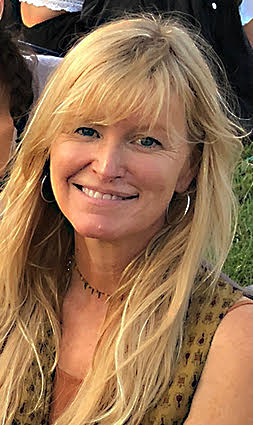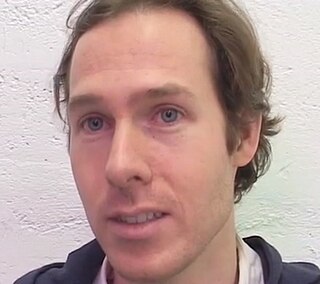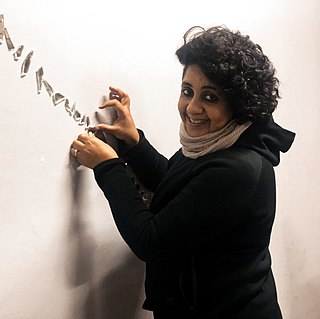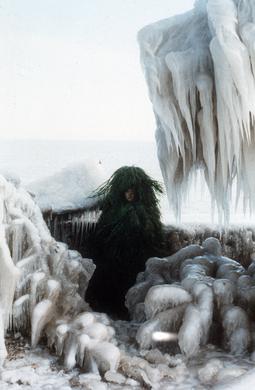Related Research Articles

Land art, variously known as Earth art, environmental art, and Earthworks, is an art movement that emerged in the 1960s and 1970s, largely associated with Great Britain and the United States but that also includes examples from many countries. As a trend, "land art" expanded boundaries of art by the materials used and the siting of the works. The materials used were often the materials of the Earth, including the soil, rocks, vegetation, and water found on-site, and the sites of the works were often distant from population centers. Though sometimes fairly inaccessible, photo documentation was commonly brought back to the urban art gallery.

Environmental art is a range of artistic practices encompassing both historical approaches to nature in art and more recent ecological and politically motivated types of works. Environmental art has evolved away from formal concerns, for example monumental earthworks using earth as a sculptural material, towards a deeper relationship to systems, processes and phenomena in relationship to social concerns. Integrated social and ecological approaches developed as an ethical, restorative stance emerged in the 1990s. Over the past ten years environmental art has become a focal point of exhibitions around the world as the social and cultural aspects of climate change come to the forefront.
Eyebeam is a not-for-profit art and technology center in New York City, founded by John Seward Johnson III with co-founders David S. Johnson and Roderic R. Richardson.

Greenmuseum.org was a nonprofit online museum of environmental art. Since its launch in 2001, greenmuseum.org had become a source for information about this global art movement, which includes ecoart, land art, art in nature and related terms. It was formed by a group of artists in the San Francisco Bay Area who were interested in ecology who had observed that a museum did not exist that was dedicated to the history art and ecology.

Mary Mattingly is an American visual artist living and working in New York City. She is the recipient of a Yale University School of Art Fellowship, and was a resident at Eyebeam Art and Technology Center from 2011 to 2012.
Maja and Reuben Fowkes are London-based curators, critics and art historians who investigate engagements in contemporary art with ecology, climate change and the Anthropocene. Their work also addresses the art history of the former socialist territories of Central and Eastern Europe, and the Soviet Union.

Patricia Johanson is an American artist. Johanson is known for her large-scale art projects that create aesthetic and practical habitats for humans and wildlife. She designs her functional art projects, created with and in the natural landscape, to solve infrastructure and environmental problems, but also to reconnect city-dwellers with nature and with the history of a place. These project designs date from 1969, making her a pioneer in the field of ecological-art Johanson's work has also been classified as Land Art, Environmental Art, Site-specific Art and Garden Art. Her early paintings and sculptures are part of Minimalism.

Ecoarttech is an experimental, postdisciplinary, mixed media environmental art collaborative founded in 2005 by artist Cary Peppermint and literary writer/critic Leila Christine Nadir. The collaborative explores the complex relationships between modernity, technologies, networks, and concepts of nature and culture. Merging primitive with emergent technologies, ecoarttech’s work investigates the overlapping terrain between “nature,” built environments, mobility, and electronic spaces. In furtherfield.org, Sophia Kosmaoglou writes, "Refusing to regard technology merely as a tool, Ecoarttech expand the uses of mobile technology and digital networks revealing them to be fundamental components of the way we experience our environment... By drawing our attention to the increasing replacement or mediation of physical experiences by technology, Ecoarttech challenge the widely reproduced distinction between nature and culture." In visualMAG, Teresa de Andrés describes the artists as "determined to blur the frontiers between city and countryside by using technologies in a creative way... they invite us to lose ourselves in unexplored lands, sinuous urban alleys and arid mountains to the south of the Earth.
Ecological art is an art genre and artistic practice that seeks to preserve, remediate and/or vitalize the life forms, resources and ecology of Earth. Ecological art practitioners do this by applying the principles of ecosystems to living species and their habitats throughout the lithosphere, atmosphere, biosphere, and hydrosphere, including wilderness, rural, suburban and urban locations. Ecological art is a distinct genre from Environmental art in that it involves functional ecological systems-restoration, as well as socially engaged, activist, community-based interventions. Ecological art also addresses politics, culture, economics, ethics and aesthetics as they impact the conditions of ecosystems. Ecological art practitioners include artists, scientists, philosophers and activists who often collaborate on restoration, remediation and public awareness projects.
Sue Spaid is an American curator and philosopher, currently based in Belgium.

Keri Rosebraugh is an American artist and art administrator. Her artworks often deal with ecological themes and focus on human being’s relationship with nature.

Andrea Polli is an environmental artist and writer. Polli blends art and science to create widely varied media and technology artworks related to environmental issues. Her works are presented in various forms, she uses interactive websites, digital broadcasting, mobile applications, and performances, which allows her to reach a wider audience.

Linda Weintraub is an American art writer, educator and curator. She has written several books on contemporary art. Her most recent works address environmental consciousness that defines the ways cultures approach art, science, ethics, philosophy, politics, manufacturing, and architecture.

Aviva Rahmani is an Ecological artist whose public and ecological art projects have involved collaborative interdisciplinary community teams with scientists, planners, environmentalists and other artists. Her projects range from complete landscape restorations to museum venues that reference painting, sound and photography.

Bonnie Ora Sherk was an American landscape-space artist, performance artist, landscape planner, and educator. She was the founder of The Farm, and A Living Library. Sherk was a professional artist who exhibited her work in museums and galleries around the world. Her work has also been published in art books, journals, and magazines. Her work is considered a pioneering contribution to Eco Art.

Patrick Meagher Born 1973 in Manhattan, New York, Patrick Meagher is an artist, curator and arts organizer based in New York City and the Catskills. He holds a Master of Landscape Architecture degree from Harvard University, a BFA from Carnegie Mellon, and has studied at MIT and the Kunstakademie Düsseldorf under Swiss artist Alfonso Huppi.

Vibha Galhotra, born 1978 is an Indian conceptual artist based in New Delhi. Her work includes large-scale installations, sculptures, drawings, films that explore themes of ecological and environmental concerns. Her works address the shifting topography of the world under the impact of globalization and growth. She sees herself as being part of the restructuring of culture, society and geography – of New Delhi, and the world.

Fern Shaffer is an American painter, performance artist, lecturer and environmental advocate. Her work arose in conjunction with an emerging Ecofeminism movement that brought together environmentalism, feminist values and spirituality to address shared concern for the Earth and all forms of life. She first gained widespread recognition for a four-part, shamanistic performance cycle, created in collaboration with photographer Othello Anderson in 1985. Writer and critic Suzi Gablik praised their work for its rejection of the technocratic, rationalizing mindset of modernity, in favor of communion with magic, the mysterious and primordial, and the soul. Gablik featured Shaffer's Winter Solstice (1985) as the cover art for her influential book, The Reenchantment of Art, and wrote that the ritual opened "a lost sense of oneness with nature and an acute awareness of ecosystem" that offered "a possible basis for reharmonizing our out-of-balance relationship with nature."
Bernard Ruiz-Picasso is a businessman and art collector. He is the grandson of Pablo Picasso and the son of Paul and Christine Ruiz-Picasso. He curates international exhibitions dedicated to Pablo Picasso.
Yeni and Nan are a team of Venezuelan artists. They were featured in exhibitions across the United States and Latin America. Yeni-Jennifer Hacksaw, developed a creative partnership with Nan González, under the name Yeni and Nan, carried out artistic performances and multimedia installations, which identified with 1980s conceptual art.
References
- ↑ http://www.eyebeam.org/ecovention-current-art-to-transform-ecologies Archived 2014-02-21 at the Wayback Machine Eyebeam "Current Art to Transform Ecologies."
- ↑ http://greenmuseum.org/c/ecovention/sect1.html#landart Archived 2015-09-24 at the Wayback Machine Greenmuseum.org Ecoventions
- ↑ MARÍN RUIZ, Carmen (2014). 'Arte medioambiental y ecología. Elementos para una reflexión crítica.'. p. 42.
- ↑ "Ecovention: current art to transform ecologies". Greenmuseum. Archived from the original on 2016-03-09. Retrieved 2017-12-19.
- ↑ MARÍN RUIZ, Carmen (2014). 'Arte medioambiental y ecología. Elementos para una reflexión crítica.'. p. 98.
- ↑ Ground works : environmental collaboration in contemporary art. Pittsburgh, PA: Carnegie Mellon University. 2005. p. 21. ISBN 978-0-9772053-1-8.
- ↑ http://greenmuseum.org/c/ecovention/intro_frame.html Archived 2014-02-21 at the Wayback Machine Greenmuseum.org. Contemporary Arts Center.
- ↑ editor, Kim Kennedy White, editor; Leslie A. Duram, contributing (2013). America goes green : an encyclopedia of eco-friendly culture in the United States. Santa Barbara: ABC-CLIO. p. 67. ISBN 978-1-59884-657-7.
{{cite book}}:|last=has generic name (help)CS1 maint: multiple names: authors list (link) - ↑ Kagan, Sacha "Art and Sustainability; Connecting Patterns for a Culture of Complexity. Bielefeld: transcript Verlag, 2011."
- ↑ Green acres. Artist farming fields, greenhouses and abandoned lots. 2012. Ithaca: Worldwide Books.
- ↑ Song, Young Imm Kang. 2009. "Community Participatory Ecological Art and Education". International Journal of Art & Design Education. 28 (1): 4-13.
- ↑ "Ecovention Europe".